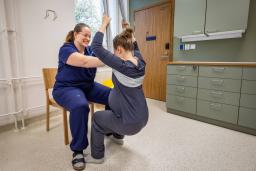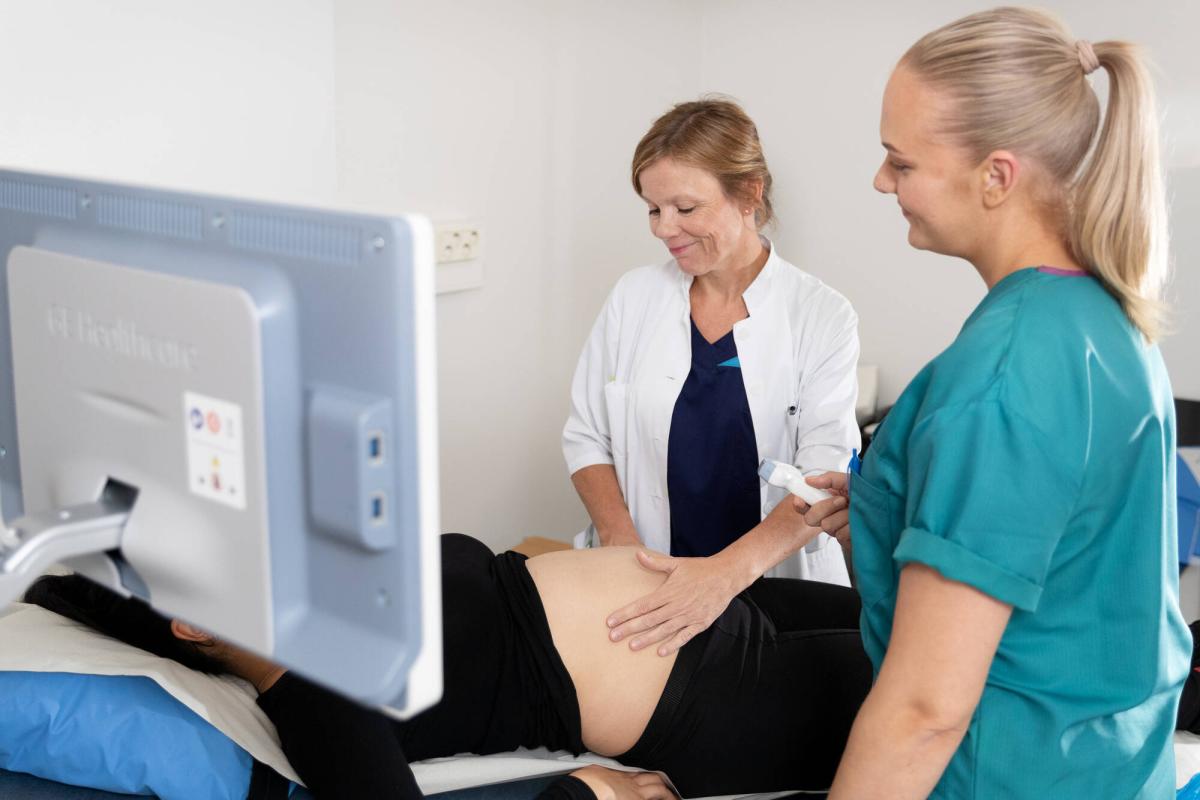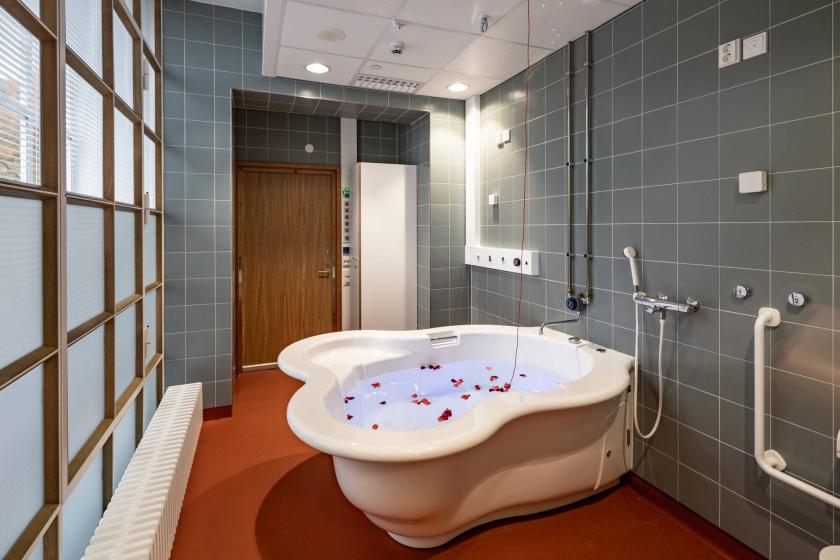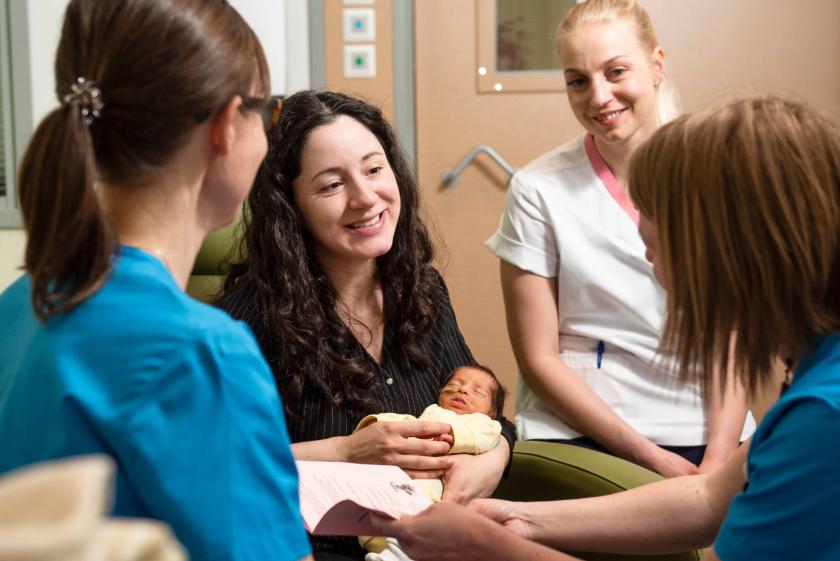Labor
Keywords:Labor starts with contractions or the rupture of fetal membranes, i.e. the waters breaking. Always call the childbirth helpline before leaving for the hospital to give birth.

You should come to the hospital when contractions
- come regularly less than ten minutes apart
- last for approximately a minute
- feel so intense and painful that you are only able to focus on the contraction.
Before the start of actual labor, contractions have usually already lasted for several hours.
If you suspect that your waters have broken, place a sanitary pad and monitor the situation. If your water has broken and you are experiencing strong and painful contractions, call the childbirth helpline.
If you do not experience strong contractions after your water has broken, call an obstetric emergency department. They will give you more detailed instructions. After the waters have broken, you can often still wait at home for contractions to begin. For the majority of mothers, labor will start within 24 hours of the time when the waters have broken, but you should come to hospital earlier than this.
Emergency services during pregnancy and labor
At the obstetric emergency departments, we treat patients in need of urgent care. Please call the hospital before seeking medical attention at the emergency department or coming in to give birth.
What to bring to hospital?
The labor process
Newborn
Further information
Gynecology and Obstetrics
Units
Labor Units, Women’s Hospital
Women’s Hospital has two labor units called Luotsi and Aallokko. We offer all our patients family-centered, individual, high-quality care.
Labor Unit, Espoo Hospital
In the Espoo Hospital Labor Unit, we offer high-quality, individual and family-centered care for those giving birth.
Labor Unit, Hyvinkää Hospital
In the Hyvinkää Hospital Labor Unit, we offer high-quality, individual, and family-centered care for those giving birth.
Maternity Ward 61, Women's Hospital
On Maternity Ward 61 at Women’s Hospital, we treat women who have given birth and their newborns. We provide individual guidance on caring for the baby…
Updated: 27.06.2025


